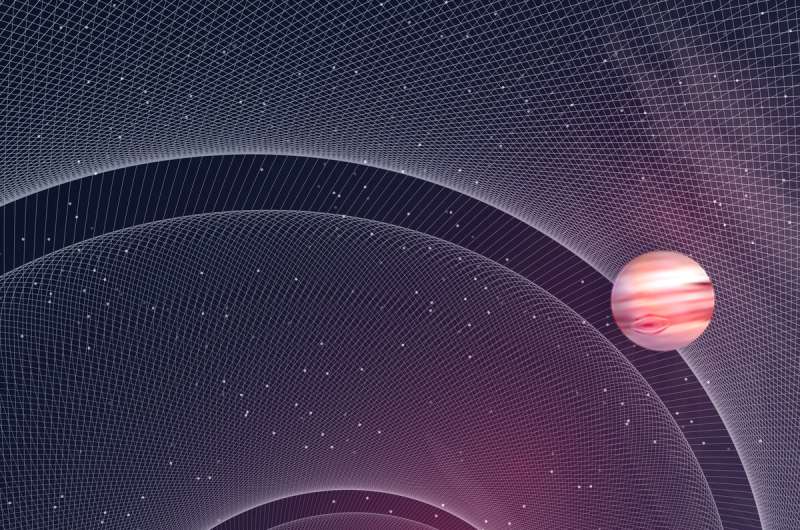Discovering exoplanets with gravitational waves

In a recent paper in Nature Astronomy, researchers from the Max Planck Institute for Gravitational Physics (Albert Einstein Institute/AEI) in Potsdam and from the French Alternative Energies and Atomic Energy Commission (CEA) in Saclay, Paris suggest how the planned space-based gravitational-wave observatory LISA can detect exoplanets orbiting white dwarf binaries everywhere in the Milky Way and in the nearby Magellanic Clouds. This new method will overcome certain limitations of current electromagnetic detection techniques and might allow LISA to detect planets down to 50 Earth masses.
In the past two decades, the knowledge of exoplanets has grown significantly, and more than 4000 planets orbiting a large variety of stars have been discovered. Up to now, the techniques used to find and characterize these systems are based on electromagnetic radiation and are limited to the solar neighborhood and some parts of the galaxy.
In a recent paper published in Nature Astronomy, Dr. Nicola Tamanini, researcher at the AEI in Potsdam and his colleague Dr. Camilla Danielski, researcher at the CEA/Saclay (Paris) show how these limitations may be overcome by gravitational-wave astronomy. "We propose a method which uses gravitational waves to find exoplanets that orbit binary white dwarf stars," says Nicola Tamanini. White dwarfs are very old and small remnants of stars once similar to the sun. "LISA will measure gravitational waves from thousands of white dwarf binaries. When a planet is orbiting such a pair of white dwarfs, the observed gravitational-wave pattern will look different compared to the one of a binary without a planet. This characteristic change in the gravitational waveforms will enable us to discover exoplanets."
The new method exploits the Doppler shift modulation of the gravitational-wave signal caused by the gravitational attraction of the planet on the white dwarf binary. This technique is the gravitational-wave analogue of the radial velocity method, a well-known technique used to find exoplanets with standard electromagnetic telescopes. The advantage, however, of gravitational waves is that they are not affected by stellar activity, which can hamper electromagnetic discoveries.
In their paper, Tamanini and Danielski show that the upcoming ESA mission LISA (Laser Interferometer Space Antenna), scheduled for launch in 2034, can detect Jupiter-mass exoplanets around white dwarf binaries everywhere in the galaxy, overcoming the limitations in distance of electromagnetic telescopes. Furthermore, they point out that LISA will have the potential to detect those exoplanets also in nearby galaxies, possibly leading to the discovery of the first extragalactic bound exoplanet.
"LISA is going to target an exoplanet population yet completely unprobed," explains Tamanini. "From a theoretical perspective nothing prevents the presence of exoplanets around compact binary white dwarfs." If these systems exist and are found by LISA, scientists will obtain new data to further develop planetary evolution theory. They will better understand the conditions under which a planet can survive the stellar red-giant phase(s) and will also test the existence of a second generation of planets, i.e., planets that form after the red-giant phase. On the other hand, if LISA does not detect exoplanets orbiting white dwarf binaries, the scientists will be able to set constraints on the final stage of planetary evolution in the Milky Way.
More information: Nicola Tamanini et al. The gravitational-wave detection of exoplanets orbiting white dwarf binaries using LISA, Nature Astronomy (2019). DOI: 10.1038/s41550-019-0807-y
Journal information: Nature Astronomy
Provided by Max Planck Society





















